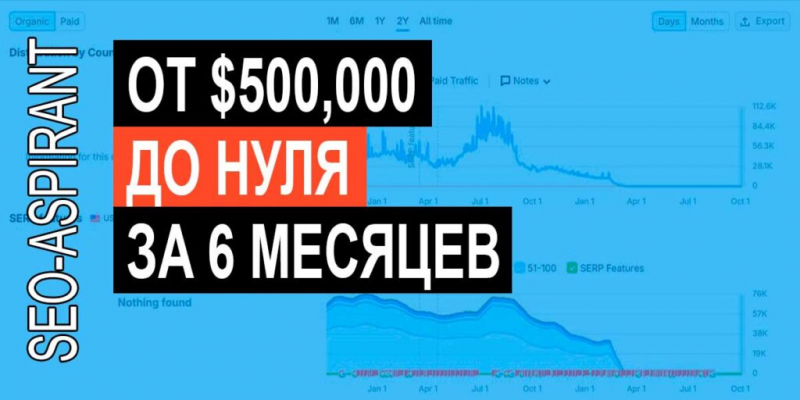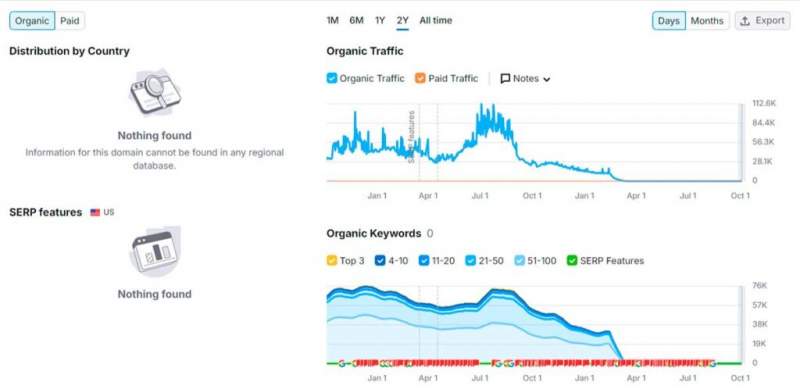Back in February 2024, one webmaster publicly boasted about the mass publication of clickbait content using artificial intelligence. And in the fall, his sites were filtered by Google.
In addition, recently on Reddit, this Internet entrepreneur complained that he was kicked out of the MediaVine media advertising platform, through which he monetized traffic.

Recommendation of the month: Telega.in — a platform for native integrations in Telegram channels. Manually verified channels and bots. We help you find your target audience in Telegram and launch effective integrations.
- How the SEO empire based on AI and clickbait collapsed
- Basics of imeria Vuyo
- Big Failure
- MediaVine is also not far behind
- What lessons can you and I learn from this?
How the SEO empire based on AI and clickbait collapsed
At first, it seemed like an ideal business plan: you buy abandoned sites with an active audience and fill them with SEO content, getting high positions in organic search. High positions bring traffic, which, in turn, increases advertising revenue.
What could have gone wrong?
Especially considering how easy it was to cheat the system during the many recent updates to Google’s algorithms. Not to mention the achievements in the field of generative artificial intelligence, which makes it possible to further reduce costs and scale production.
However, now this business model has collapsed: the king of clickbait and AI, Nebojsa Vujinovic Vujo, saw his spam SEO empire disappear in a matter of days, thanks to recent Google updates and MediaVine bans.
Basics of Imeria Vuyo
Despite the fact that the concept of generative artificial intelligence in SEO is still in its infancy, the Vuyo strategy was formed many years ago.
The process was simple. Find large sites with an active and engaged audience, such as “The Frisky” (thefrisky.com ) and “The Hairpin” (thehairpin.com ), buy them from the owners and fill them with SEO content using clickbait.
The focus was no longer on high-quality content, but on the brand’s long-standing credibility with consumers and search engines, and using this advantage by producing low-quality content designed to generate revenue from advertising, paid backlinks and sponsored posts.
The practice is known as “squatting”. And although many consider it “unethical”, it brings results, therefore it has the right to exist.
Vuyo openly stated that one such site earns him up to $500,000 a year. At the same time, the overhead costs were incredibly low, since the content was ordered on freelance exchanges.
These overheads became even lower when the entrepreneur decided to cut 90% of the editorial staff, relying solely on content generated by artificial intelligence.
Here you might think that Vuyo would become a big fan of the tool that helped him cut costs so significantly, but in fact it turned out not to be so. Comparing the revolution in LLM with a similar revolution in the automotive industry, he says:
I hate cars. They are harming my planet. But I don’t ride a horse anymore, right? I’m driving a car.
However, this does not prevent Vuyo from using AI to generate content on their sites.
Here are some examples of texts from his sites:


As you can see, even basic detectors detect content as 100% generated by AI.
Big failure
It’s no secret that major updates to Google’s algorithms over the past year (or so) have significantly shaken up the SEO industry. At first glance, it’s easy to think that all brands have been hit hard by the updates and are trying to recover, but that’s not quite true.
Yes, most brands initially felt a significant decrease in traffic, but many of the major sites have already begun to regain their positions.
Many of the sites that are still experiencing difficulties have lost their user orientation, replacing it with spammy SEO practices such as stuffing articles with keywords and generating useless content. They will recover as soon as they make the necessary changes and review their strategy.
Brands that are really experiencing difficulties and will most likely never recover are those who have completely switched to AI gear. Like, for example, Vuyo sites.
Google’s algorithm core updates released this summer were almost entirely aimed at rooting out content created by artificial intelligence, rather than promoting content that is truly useful to users.
Given that generative AI is only able to dig through web resources to get answers, rather than bring in new information, it is not surprising that such content has suffered the most.
And one of the most affected webmasters was Vuyo, and his website “The Frisky” serves as a vivid example of Google’s sanctions for AI content. Just look at the drop in its traffic and visibility:

The site, which once had an average of 30 thousand visitors per month (and before that – 100+) and about which even Wikipedia says, has now fallen to complete zero.
MediaVine is also not far behind
But it’s not just Google that has decided it’s time to fight AI-generated spam. MediaVine has also been harshly pursuing sites using artificial intelligence-generated content recently, stating earlier this year in its blog that it:
“is developing faster, automated tools that will help us identify low-quality, massively artificial intelligence-generated content all over the Internet.”
This is exactly what Vuyo complained about on Reddit:

In a few months, the “content factory” of Vuyo has turned from a generator of thousands of traffic and money into useless garbage.
What lessons can you and I learn from this?
One thing is for sure: in the short term, over-reliance on AI in content production may seem tempting, but it is absolutely necessary that user intentions, quality and authenticity are at the heart of content production.
Many content creators are under more pressure now than ever to release as much content as possible in search of short-term gain, but hopefully examples like this one won’t let you do that. At the very least, it can serve as an example that you can use to counter the demands of the decision maker in your company.
It’s no secret that when generative AI was born, Google immediately reacted like this: slammed the door and directed traffic to a small number of sites that it trusts.
Now Google is gradually starting to open this door to an increasing number of sites that it trusts. Sites that primarily provide users with high-quality content. Sites that use artificial intelligence to develop a content strategy, but at the same time focus on writing great content that is really useful.
Ask yourself the question: will your site be included in this list?
Source of information: wired.com .
